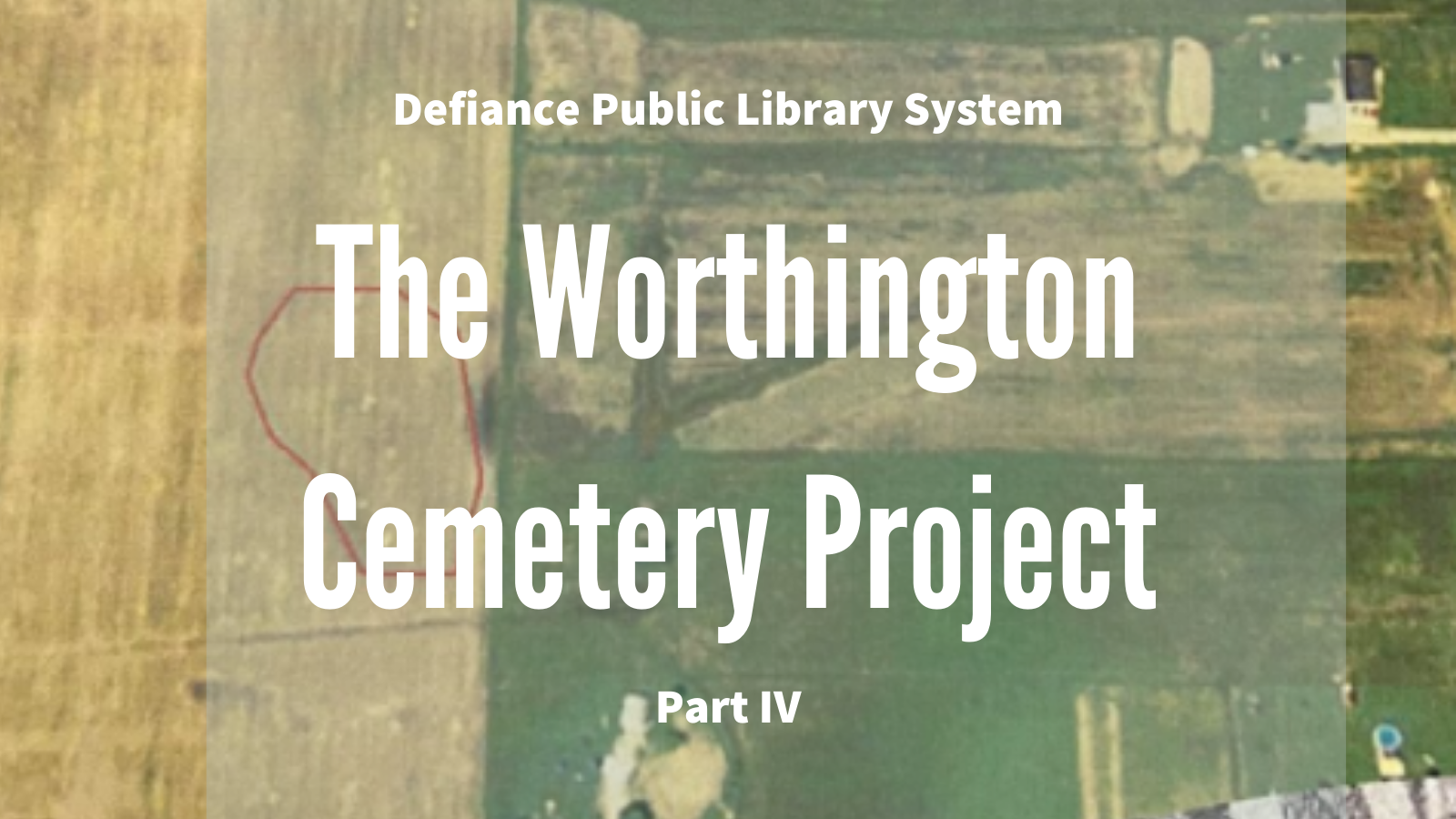
Read Part I | Read Part II | Read Part III | Read Part IV | Read Part V | Read Part VI
“Solemn feeling in the field…”
The field where Worthington Cemetery is located is dry, and the weather cooperated, allowing us to take another walk. After researching, we have a better idea of where the cemetery is located within the field. It is a visibly higher area, and the ground is largely sand, rather than dirt or clay. The farmer who is leasing and farming the field granted permission for us to take dowsing rods to the site. It has already been planted, so we made our way through the open spots in the soybean plants.
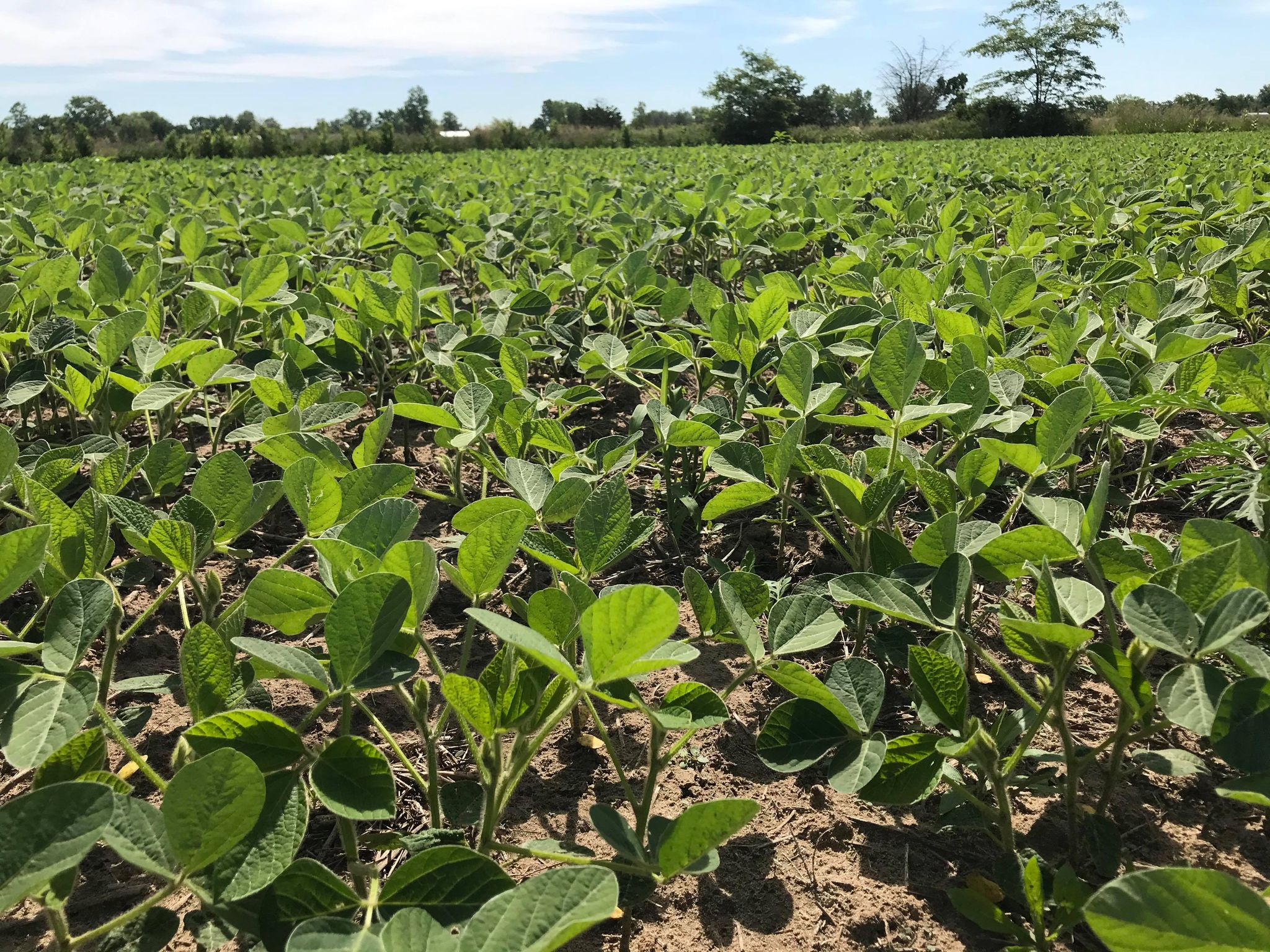
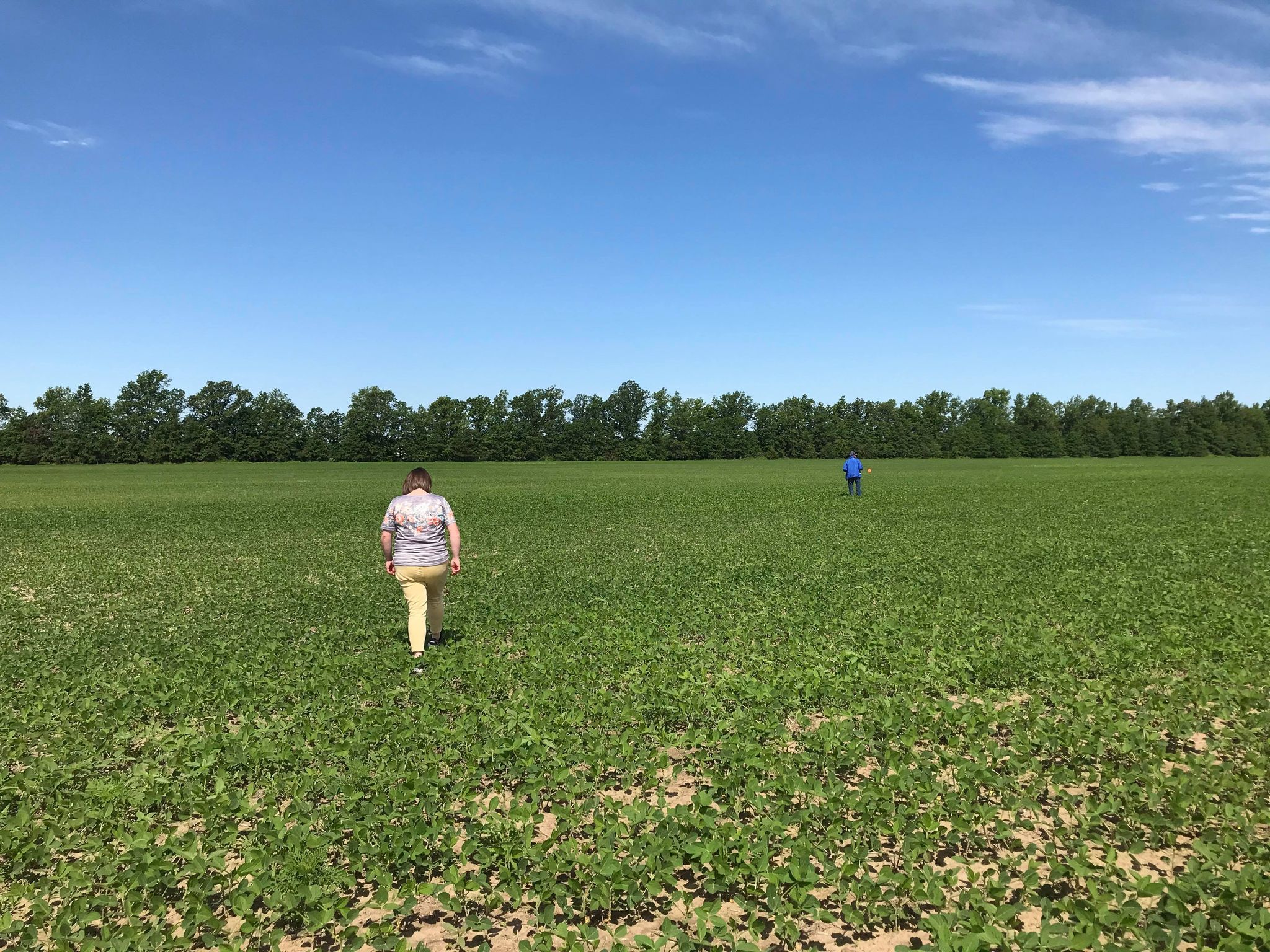
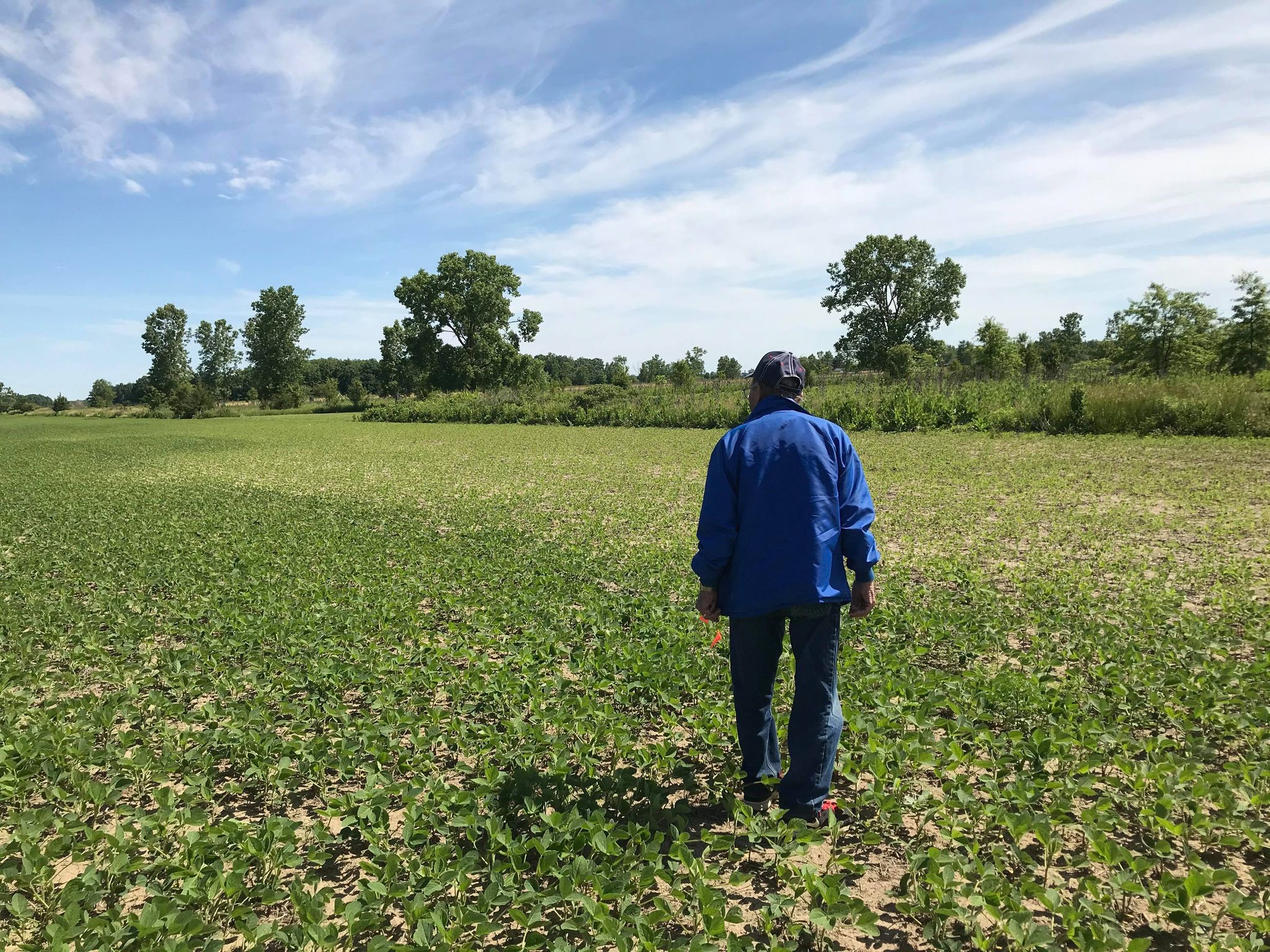
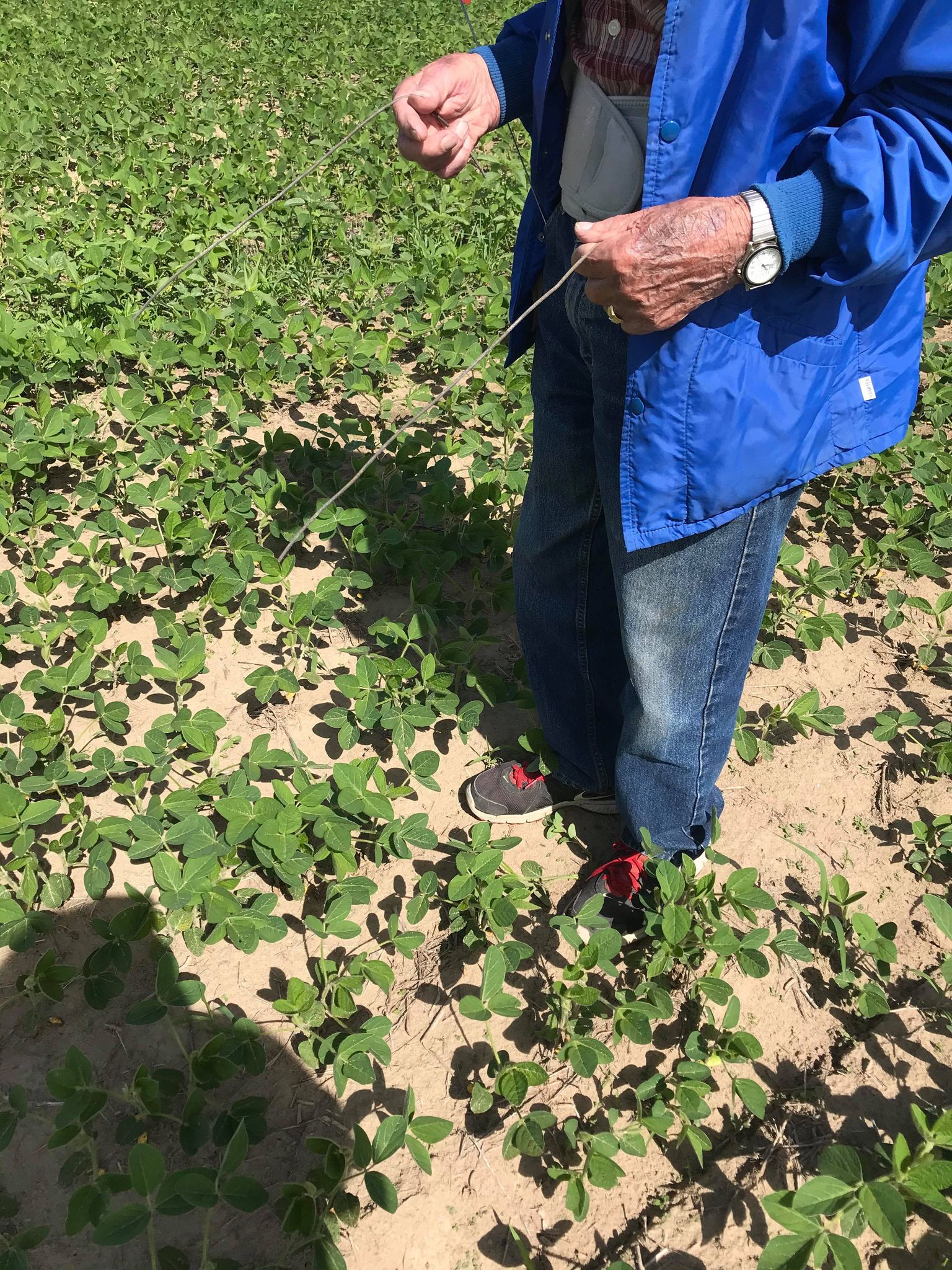
We were joined by a local farmer who has been in the area for many years. He has used dowsing rods before, and shared that they are said to be able to locate graves, underground water, and also field tiles. Dowsing has a long history of finding things underground. It has been called divining or even witching. The theory is, with the use of bent metal rods held very gently in both hands, with the rods pointing forward, there is a magnetic variation when something is detected underground which will cause the rods to move towards each other and even cross. The disruption of layers of dirt, say from a grave shaft, could be a variation. Dowsing rods have been used at archaeological sites, but in conjunction with earth surveying and moving equipment. They have shown to be somewhat reliable, but are not taken as definitive evidence on their own.
The three of us walked to the higher, sandy area of the field and each took a turn with the rods. The farmer demonstrated how to use them and walked slowly around the area. He did not have any experience with the rods crossing as he walked. My supervisor, Renee Hopper, took a turn. She walked slowly in circles, and then came across an area where the rods did cross. This was within the raised, sandy area. To try again, she had me stand where they crossed and she walked a straight path away and then came towards the area. The rods did start to move together again. I tried the same path that she took while she stood in the spot, the rods moved together for me as well.
We hoped to be able to walk a straight path away from this first spot and have the rods cross at regular intervals to indicate a row of graves. This didn’t happen for us. After all three of us trying again, we didn’t have quite the same results. The rods would move towards each other, but never really cross again. The farmer who is leasing the field asked that we put a small stick with a flag on it if we found anything, so we did mark that first location. I asked how long this tree had been growing near the field, and the farmer estimated 150 years, so it was likely here before the cemetery was no longer in use and considered abandoned.
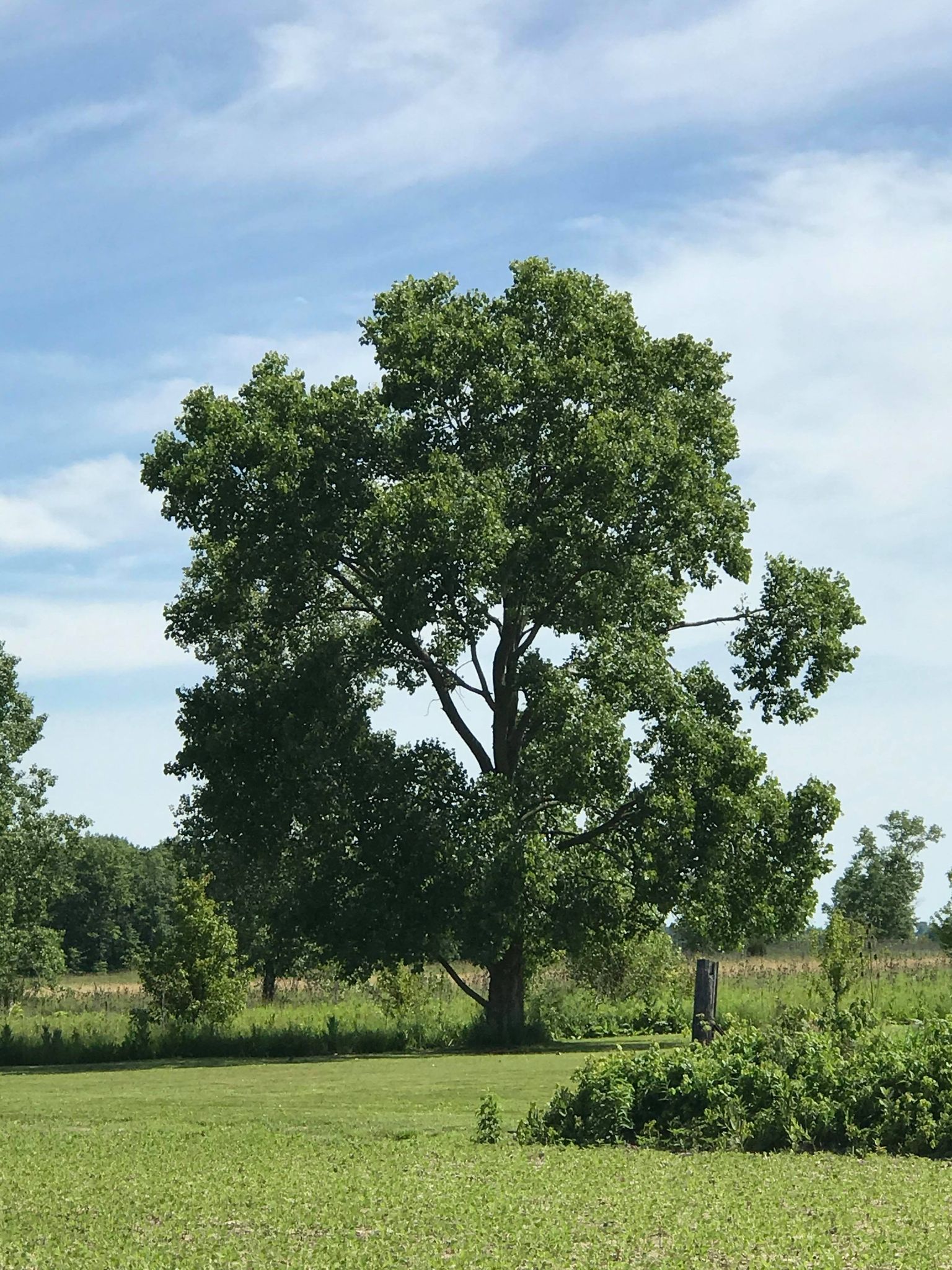
Knowing we were most likely walking over the cemetery gave a solemn feeling. We wanted to show respect to the people buried beneath our feet. This is the reason for the project: to ensure that the people who lived and died there are remembered. I found two different types of rocks while we walked the sandy area. It is hard to know if these could be shards from tombstones or simply field stones. It is likely the tombstones were made of sandstone for that era.
Brownstone is a type of sandstone that was widely used in the 1800s. It ranges in color from dark blond to varying shades of brown. It can be fairly easily carved; this quality also makes it deteriorate quickly and turn back into the sand from which it was formed.



We have heard feedback from people who have been following this project who say they are very surprised and disheartened that these tombstones were moved in the first place. This is unfortunately not unique to this cemetery. It happened all across the country, especially when the cemetery was considered abandoned. Property is bought and sold, and farmers are practical people. Farming around tombstones is not practical. These stones were first moved to along the fence row in this field, then as people bought the land surrounding the field, the stones were moved again. Below is a link to a CBS news report on this same thing happening in Washington, D.C. The second link is to the History Arts and Science Network website that is dedicated to the preservation of cultural heritage throughout the world. The following YouTube video shares the story of Project Harmony, an effort to restore tombstones from Harmony Cemetery that were used as material to shore up a coastline of a property on the Potomac River.
https://www.cbsnews.com/news/this-week-on-sunday-morning-february-21-2021/
It’s pretty obvious that, just like what you told here, field tiles are very much an integral part of a seamless irrigation system in agricultural sites. My step-uncle has an empty land next to his country house which he plans to develop some time next year. I’ll show this article to him so he’ll be inspired to take the right actions sooner or later.